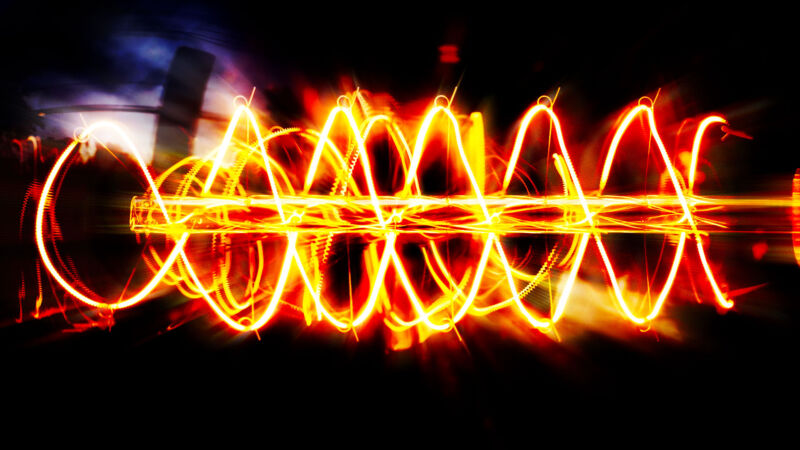As installing renewable generating sources continues to set annual records, we're reaching the point where storing the power they generate becomes essential. Proper storage can provide a way to cover temporary drops in production due to changing weather and can potentially offer a way to use power at times when renewable sources aren't producing at all.
So far, attention has focused on batteries as a storage technology that already works and on hydrogen as a technology that could work. But both options have problems with scaling to meet our needs. And there's one technology that's already in use that might be more flexible: heat. Heat created from concentrated solar power already allows solar plants to keep producing long after the Sun sets (some plants can generate around the clock). And we already know how to produce and store heat efficiently.
Now, researchers from the National Renewable Energy Lab and MIT have improved a technology for using the stored heat to produce electricity: a photovoltaic device that's sensitive to infrared wavelengths. They show that its efficiency is competitive with that of steam boilers, and it avoids the use of moving parts and water that might otherwise be scarce.
Thermophotovoltaics
Silicon photovoltaic cells—and those made from a range of other materials—can convert infrared light into an electrical current. They just don't do so efficiently. Other materials are more sensitive to these wavelengths, but the lower-energy photons in the infrared result in a correspondingly lower voltage in the photovoltaic output. That drops the efficiency of any devices targeting these wavelengths.
But since the research team is focusing on energy storage, they assume that they can control the temperature of the hot object that's acting as their photon source. So the researchers plan to use a relatively high temperature (in the area of 2,000° C) to boost the number of higher-energy photons near the edge of the visible spectrum. This will allow them to use a semiconductor with a higher bandgap, which corresponds to a larger output voltage.
To boost the efficiency further, the cell combines two different materials that absorb different areas of the spectrum in what's called a two-junction configuration. The team tried two different two-junction setups, one using aluminum/gallium/indium/arsenic and gallium/indium/arsenic and a second that's gallium/arsenic and gallium/indium/arsenic. The two have slightly different properties in what they absorb most efficiently, which we'll come back to shortly.
Since this configuration is entirely controllable, the researchers essentially wrap the whole device, which includes both the heating element that produces photons and the thermophotovoltaic cell that converts them to electricity, in highly reflective material. Any photon that emits in the wrong direction gets reflected to either strike the thermophotovoltaic device or be absorbed by the heating element, thus helping maintain its high temperature. The same is true for any photons that reach the thermophotovoltaic material but aren't absorbed by it. (The researchers dryly note that photovoltaics can't reflect unabsorbed photons to the Sun to keep it hot.)
The net result is a total device efficiency of around 40 percent, depending on which materials are used and the temperature of the heat source.
How this stacks up
A 60 percent loss sounds pretty horrific compared to a battery, where the round-trip efficiency is more than 90 percent. But the researchers note the efficiency is already higher than that of the average steam turbine generator in the US. The thermophotovoltaic devices are relatively new, and it's expected that there will be plenty of room to boost the efficiency above 40 percent; by contrast, turbines are about as mature as a technology gets.
That's where the two different devices come in. One was most efficient at extracting electricity from temperatures at around 2,400° C, the second did better once temperatures dropped below 2,000° C. So it should be possible to design systems where different thermophotovoltaic devices are used to efficiently extract electricity as the temperature of a source material progressively drops. And, once the temperature drops below where thermophotovoltaic devices work well, things should still be hot enough to create steam to drive a turbine.
A second benefit is that the system is pretty agnostic about how it generates the heat for storage in the first place. It could come from electricity when wind and solar are overproducing. It could be part of a concentrating solar power plant (although those tend to max out at around 1,000° C). One design for a next-generation nuclear power plant would use heat storage to increase its flexibility. There may even be some industrial processes that produce waste heat at these temperatures (although they're also well above what obvious things like steelmaking require) that could be stored.
Finally, the team notes that an inexpensive material—graphite—can be used to store heat at these temperatures. So, as long as the cost of the thermophotovoltaic device and supporting hardware can be kept within reasonable limits, this might allow thermal storage coupled with renewables to compete with fossil fuels. The main issue seems to be the extreme temperatures needed to get this to work.
Nature, 2022. DOI: 10.1038/s41586-022-04473-y (About DOIs).



3175x175(CURRENT).thumb.jpg.b05acc060982b36f5891ba728e6d953c.jpg)

Recommended Comments
There are no comments to display.
Join the conversation
You can post now and register later. If you have an account, sign in now to post with your account.
Note: Your post will require moderator approval before it will be visible.